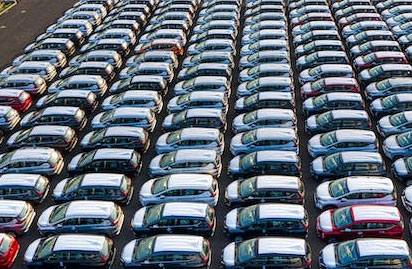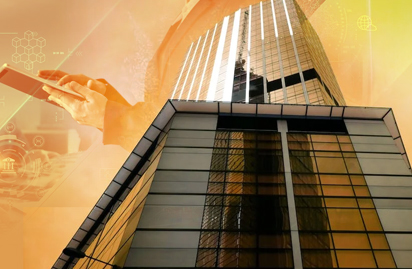The Automobile industry holds a 7.1% share in India’s GDP. The Automotive Mission Plan 2016-26 (AMP 2026) aims to drive the Automobile industry to be the engine of the Make in India programme, developing India as a global manufacturing center. Recently, Tesla Inc. entered India early in the year by opening an office in Bengaluru, Karnataka, and registering its subsidiary, Tesla India Motors and Energy Pvt. Ltd. Tesla has chosen the tax-friendly jurisdiction of the Netherlands to route its Indian investment.
As per UN’s Sustainable Development Goals website, the Government of India has a target of installing renewable energy capacity 175 gigawatt (GW) by 2022. These include 100 GW from solar power, 10 GW from bio-energy and 5 GW from hydropower, and 60 GW from wind. At the United Nations Climate Action Summit, India announced that it would be increasing the renewable energy target from 175 GW by 2022 to 450 GW by 2030. With these targets in mind it is only fair that the government is accelerating the transition to electric vehicles, which will consume less non-renewable sources of energy and focus more on battery charging.
Indian Government’s Role as a Catalyst:
The Indian government is committed to encouraging alternate pollution-free transport in the country by providing incentives to bio-fuel, CNG, ethanol and electric vehicles. It offer incentives to bio-fuel, CNG, ethanol and electric vehicles. It is India’s stated vision to become a 100% e-vehicle nation by the year 2030.
- R&D Incentives for Industry and Private Sponsored Research:
A weighted tax deduction is given under section 35 (2AA) of the Income Tax Act. Weighted deduction of 200% is granted to assess for any sums paid to a national laboratory, university or technological institute. The said sum is used for scientific research within a program approved by the prescribed authority.
- Manufacturers with an In-House R&D Centre:
Section 35 (2AB) of the Income Tax Act 26, 1961 provides weighted tax deduction of 150% of the expenditure incurred by a specified company, on scientific research in the in-house R&D centers as approved by the prescribed authority. This does not include expenditure on the cost of any land or building. The weighted tax deductions of 150% are effective until 31 March 2020. Consequently, the weighted tax deductions will be 100%.
Favourable Schemes and Policies in the Automobile Sector:
- To further boost investment, India plans to offer USD 4.6 Billion in incentives to companies setting up advanced battery manufacturing facilities. India plans to retain its import tax rate of 5 percent for certain types of batteries, including batteries for electric vehicles, until 2022, but will increase it to 15 percent thereafter to promote local manufacturing.
- During the Electric Mobility Conference of 2020, India presented the aim of establishing India as a global automobile manufacturing hub in
- the next five years. Auto Industry in India is also expected to reduce costs of Electric Vehicles (EVs) for Enhancing Sales While Maintaining Quality.
- The Indian government is working towards making e-Highway on Delhi and Mumbai Expressway where e-buses and trucks would run. “We are going ahead with a pilot project; the Delhi-Mumbai corridor will become the lifeline of India and we plan to install new electric roads. Electricity as a fuel is available in the country, hence mass rapid transport on electricity is the most important solution for the country.
- Under the automatic route, 100% Foreign Direct Investment (FDI) is permitted along with full delicensing. Hence, making it easy for investors to set up their manufacturing plant/shop in India.
- The Fame India Scheme II is proposed to be implemented over a period of 3 years from 1 April 2019, for faster adoption of electric mobility and growth of electric and hybrid technology to improve the eco-system in the country.
- The Automotive Mission Plan 2016-26 (AMP 2026) outlines the trajectory of growth of the automotive ecosystem in India, including the glide path of definite regulations and policies that govern research, design, technology, testing, manufacturing, import/ export, sale, use, repair, and recycling of automotive vehicles, components and services.
- Assisting use of vehicles propelled by alternate energy sources.
- Goverment supporting National Automotive Testing & Research and Development Infrastructure Projects (NATRIP) for growth of Auto industry in India. It aims at converging India’s unparalleled strengths in IT and electronics with automotive engineering sectors. The main area of focus of this project is on providing low-cost manufacturing and product development solutions.
- Preference for fuel efficient car with good looks. Household living standards improving year over year.
- Presence of advanced tech because of global entrants for product as well as production. Evolution of hybrid cars in the recent years.
- Agreement between India and Netherlands for the Promotion and Protection of Investments
Agreement between India and Netherlands for the Promotion and Protection of Investments:
This Agreement is applicable to any investment made by investors from India or Netherlands (Contracting Parties) in the territory of the other Contracting Party including an indirect investment made through another company, wherever located, which is fully owned by these investors, whether made before or after the coming into force of this Agreement.
Under this agreement, both the countries are bound to encourage and promote favourable conditions for investors to make investments in each other’s territory in accordance with its laws and policy.
National Treatment and Most Favoured Nation Treatment:
- Investments of investors of each Contracting Party must always be given a fair and equitable treatment under this agreement and the parties can enjoy full protection and security in the territory of the other Contracting Party.
- Each Contracting Party must agree to investments, including their operation, management, maintenance, use, enjoyment or disposal by such investors, treatment which should not be less favourable than that accorded either to investments of its own investors or to investments of investors of any third State, whichever is more favourable to the investor concerned.
- The terms of the agreement with respect to the grant of most favoured nation treatment do not apply to privileges which either Contracting Party accord to investors of third States on account of its membership of, or association with, a customs or economic union, a common market or a free trade area.
- The terms of the agreement with respect to the grant of most favoured nation treatment do not apply to international agreement or arrangement relating wholly or mainly to taxation or any domestic legislation or arrangements consequent to such legislation relating wholly or mainly to taxation.






